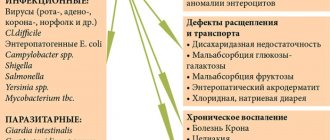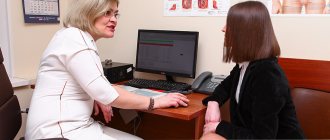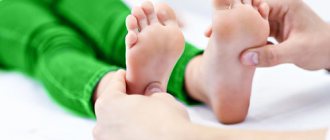Disturbances in the functional state of the colon or constipation are a fairly common disease in childhood. In the medical literature in recent years it has been called “Irritable Bowel Syndrome.” Constipation occurs in children of all ages, but especially often in younger schoolchildren and children attending preschool institutions. In most cases, this disease does not always bring pain to the child, therefore, clearly insufficient attention is paid to this pathology. Parents find out about this disease in their child quite late, especially if the child is shy and secretive.
Treating constipation is a long, stressful and not always rewarding task; a purely medical approach to this problem does not solve most problems. Children with chronic constipation become lethargic, irritable, fearful, and their performance at school quickly declines. Many children, out of fear of painful sensations during the act of defecation, become isolated and independently suppress natural urges, thereby aggravating the course of the disease, a so-called “vicious circle” is formed.
Thus, chronic functional constipation in children attending preschool institutions and school acquires social significance; Therefore, pediatricians almost always rely on parents for help and support in the rehabilitation of children. Only parental care and a friendly environment help to obtain lasting results.
Constipation is the abnormal functioning of the colon, which is manifested by rare bowel movements in a child (less than once every two days) or their complete absence for a long time (which is very common), difficult and painful bowel movements, a small amount of stool (dry and hard). ), lack of physiological feeling of complete bowel movement.
The human colon is the site of fecal mass formation and is approximately U-shaped. The length of the entire colon in a child over 3 years old is on average 1-1.5 meters. Feces are formed from undigested and undigested food residues. This occurs through partial dehydration and various types of peristaltic movements of the intestine, forming and moving feces towards the exit. A significant part of the feces consists of a huge number of microbial bodies. According to microbiologists, in 1 gram of feces of a healthy person, from 30 to 40 billion microorganisms are found.
Causes of constipation in children
The causes of constipation are varied. We, pediatricians, believe that constipation is primarily associated with poor nutrition
or the so-called nutritional factor.
The cause of chronic constipation is a deficiency in the diet of coarse plant fiber
as one of the main stimulants of intestinal motility (vegetables, fruits, coarse breads, gray varieties of cereals, etc.), as well as
consumption of high-calorie, refined foods
. As a result of such nutrition, a small amount of dehydrated fecal matter is formed in the colon, and their movement through the intestines is disrupted. It has been noted that a lack of water in the stool leads to a significant delay in the movement of stool through the intestines. This is especially clearly manifested in the winter-spring season, when the consumption of both fresh and prepared vegetables and fruits is noticeably reduced.
The second important point in the formation of functional constipation is a sedentary lifestyle.
, eliminating full loads on the muscles of the anterior abdominal wall, and the latter play an important role in potentiating intestinal movements.
Predisposing factors to the occurrence of chronic constipation in children are also congenital anomalies of the colon
, such as dolichosigma (elongation of the sigmoid colon) and dolichocolon (elongation of the entire intestine). Constipation can be caused by intestinal parasites (roundworms, whipworms, bovine or pork tapeworm). Protozoan microorganisms (Giardia) rarely cause stool retention in childhood.
The state of the child’s nervous system plays an important role in regulating the motor function of the colon.
. Various stressful situations, mental, emotional and physical overload, unfavorable family and school relationships between children and adults negatively affect the general condition of the child’s nervous system, which in turn leads to disorders of the motor function of the colon. Elimination of stressful situations, normalization of the psychological situation in the family and at school, and in some cases, the help of a neuropsychiatrist, have a beneficial effect on the treatment of the disease.
Prolonged retention of a child's feces leads to the absorption of rotting and fermentation products from the intestines into the blood, which has a negative effect on the child's entire body (toxic effect). Children complain of headaches, increased fatigue, their appetite decreases, and sleep is disturbed. Children become irritable, whiny and sometimes “uncontrollable.” If there is no stool for several days, he may experience severe abdominal pain, vomiting, and increased body temperature.
Very often, dense feces, accumulating for a long time in the final section of the colon, stretch the anus when trying to empty. This may cause cracks to form
. Cracks are always accompanied by acute pain in the anus during and after bowel movement. The child is afraid of these painful sensations and tries to avoid attempts to empty the intestines, which leads to even greater compaction of the stool.
In advanced cases, with a prolonged absence of stool, as a result of increasing intraintestinal pressure, such an unpleasant condition as stool may appear, that is, spontaneous leakage of feces through the anus. The consequences of this condition are clear. The child becomes the object of jokes, and in some cases, more aggressive actions from peers. The patient’s mental state is on the verge of collapse, children refuse to go to kindergarten or school, and the feeling of fear exceeds all reasonable limits.
Chronic constipation in a child can also appear when the child loses the habit of bowel movements at the same time (usually in the morning). Parents are often to blame here because they pay little attention to their child’s life and do not teach them from early childhood to defecate at a certain time.
We have noticed that some teachers in kindergarten or school, for strange, sometimes indescribable reasons, do not allow young children to go to the toilet during class. Such illiterate behavior of the teacher leads to the fact that children deliberately suppress the urge to defecate during school. This harmful reflex easily becomes established and causes chronic constipation.
This phenomenon is facilitated by an unusual environment for a child who has started attending kindergarten or school for the first time: a public toilet with the presence of a large number of strangers of different ages. This has a particularly unfavorable effect on shy, shy children, especially boys brought up in the strictest Puritan principles.
We observed a 7-year-old child with severe constipation due to the fact that the child, having started going to school, held back bowel movements due to the fact that there were no stalls in the school toilet, and the children could watch each other.
What should parents do if their child has chronic constipation? The main thing is not to self-medicate, but to immediately seek advice from a specialist - a gastroenterologist. Children should definitely undergo the necessary examination.
What types of constipation are there?
Stool retention can be caused by congenital anatomical defects of the colon and rectum. Constipation in children, the causes of which lie in anatomical features, is called organic.
In the vast majority of cases in childhood, not organic, but functional constipation occurs. Functional constipation is not caused by structural lesions of the intestine (everything is formed correctly, there are no anatomical defects of the intestine), but by violations of the mechanisms regulating the motor activity of the gastrointestinal tract (dysfunction of the gastrointestinal tract)1.
As a result of various reasons, the tone of the intestinal wall changes. Constipation can be spastic (more details in a separate article), when the tone of some part of the intestine is increased, and feces cannot pass through this place. With such constipation in a child over 1 year of age, the feces become very dense, “sheep-like.” Another type of functional fecal retention in children 5, 6, 7, 10 years old is hypotonic or atonic constipation. In this case, the delay in defecation can reach 5–7 days, the feces are usually large in volume, but loose8.
What diet should you follow for constipation in children?
Parents in most cases consider nutritional recommendations to be of little significance, demanding the prescription of new drugs that can eliminate constipation within a few days. It should be said right away: such drugs do not exist! Since disorders of the motor function of the colon in the vast majority of cases are associated precisely with eating disorders in the family, organizing the digestive diet is the main task of treatment.
The child’s diet should be changed so that it contains more vegetables containing coarse plant fiber and pectins
, i.e.
components that stimulate intestinal motility. These are carrots, beets, cauliflower and Brussels sprouts, pumpkin, zucchini, squash, plums, and melons
. There is not enough fiber in cucumbers, tomatoes, and apples.
Vegetables and fruits should make up at least 50-60% of the daily diet and be consumed in any form
(fresh or after heat treatment).
During lunch, sick children should be offered vegetables in the form of salads, vinaigrettes, purees, seasoned with vegetable oil and light mayonnaise to improve their taste. It is better not to use fatty varieties of mayonnaise and sour cream
, as fats inhibit intestinal function. Sour cream can be added to vegetable or cereal soup.
Pediatricians attach particular importance to the systematic intake of wheat bran . This is a valuable natural product obtained by grinding grain and has a number of useful properties:
- bran is one of the powerful stimulants of intestinal motility;
- they contain a significant amount of B vitamins, which have a beneficial effect on all organs and systems of the human body, and especially the central nervous system;
- bran helps remove toxins and allergens from the body, their use is advisable in the complex treatment of numerous allergic diseases;
- Bran removes excess cholesterol from the body and thereby helps prevent atherosclerosis.
Wheat bran can be used in any form. More often we recommend using wheat bran in this way.
Spread the purchased product (usually sold at flour mills and pharmacies) in a thin layer (1-1.5 cm) on a metal tray and bake in the oven at a temperature of 100-150 C for 10-15 minutes. After cooling, transfer the bran to a hermetically sealed jar, since the product is hygroscopic. Three to five tablespoons of bran, i.e. the amount that is required for the day, pour 1/2 cup of boiling water and leave for 15-20 minutes. In this case, a thick light gray or light brown mass is formed.
Bran is a completely tasteless product, and in most cases children resolutely refuse to take it in its natural form. To improve taste, add a single dose of bran (usually starting from 1 teaspoon 3 times a day, gradually increasing to 3-10 tablespoons per day, depending on the degree of stool retention) to 1/2 cup of fruit or vegetable juice, to a glass of fermented milk product, to porridge, soup, side dish. The duration of taking bran is not limited and can last for years without any harm to the body.
Your daily diet should include fermented milk products (yogurt, fermented baked milk, Varenets, one- or two-day kefir, etc.)
, they are best consumed in the morning on an empty stomach and at night. Fermented milk products can be enriched with bifidum flora.
The first courses in the diet are mandatory; soups are predominantly vegetable or made from gray cereals (buckwheat). It is better to eat meat in a cooked piece. Bread of gray and black varieties, with bran, yesterday's baking. Fresh buns and cakes are contraindicated.
If you have constipation, you should exclude foods that increase gas formation in the intestines: whole milk, sweet foods, legumes.
For normal functioning of all muscles and intestines, in particular, it is necessary to consume foods containing potassium
. These are baked potatoes, dried fruits, dried apricots, prunes, figs, and compote made from them. Parents can do the following: pour boiling water over 10-20 prunes or dried apricots (or all together) the night before, divide the portion into 3 parts in the morning and give it to the child at school, where he will happily eat these berries. And in the evening at home, the child will drink the resulting infusion from the berries.
As a dessert, we recommend giving children with chronic constipation a mixture of well-washed, steamed with boiling water and well-dissolved dried fruits:
- prunes - 1 part by weight,
- figs - 1 part by weight,
- dried apricots - 1 part by weight,
- walnuts (core) - 1 part by weight.
The products are mixed in equal quantities, cut finely with a stainless steel knife, 1-1.5 parts by weight of honey are added, the whole mixture is mixed again, placed in a jar and sterilized at 80 C for 15 minutes. The dose is usually 1-2 teaspoons. l. 3 times a day after meals. It should be remembered that such a mixture can cause allergic reactions in children with a predisposition to such reactions.
more liquid during the day.
: at least 4-5 glasses a day in the form of tea, compotes, broth, juices, water, etc., as well as taking cool drinks in the morning on an empty stomach (100-200 ml). Carbonated drinks are excluded.
Daily regimen for constipation
Despite the significant role of diet, it may not be effective if the child does not develop the habit of emptying his bowels at a certain time, preferably in the morning (6-9 hours). This habit should be developed and reinforced. To do this, immediately after getting up in the morning, the child drinks 0.5-1 glass of cold water or vegetable juice on an empty stomach.
If there is a urge to stool, the patient empties the intestines as much as possible. If there is no urge to defecate, you should first resort to physical exercise, breakfast and after a while go to the toilet. A squatting position is assumed, with legs tucked to the stomach. The act of defecation is aided by self-massage of the abdomen with hands, rhythmic retraction of the anus, and pressure between the tailbone and the anus.
Appropriate conditions must be created for the child. If the child is small, then it is better to sit him not on the toilet, but on the potty (previously washed clean and warmed slightly above body temperature). Restoring the act of defecation is a long-term task, and it must be solved by parents and adults in direct contact with the child, persistently, without emotional outbursts.
List of physical exercises for constipation in children
For chronic constipation, daily dosed physical activity is necessary - walking, morning exercises, outdoor games, skiing, skating, swimming. During classes at school, physical education breaks should definitely be held during lessons. Most exercises should be aimed at stimulating the muscles of the anterior abdominal wall. We offer a set of special exercises to prevent constipation in children.
- Free ventilation of the room. Walking in place - 30 sec
- I. p. (starting position): sitting on a chair, hands to shoulders. Raise your arms up, tilt your torso back - inhale. Hands to shoulders, torso slightly tilted forward - exhale - 2-8 times
- I. p.: sitting on a chair. Raising your arms to the sides - inhale. Raise your right leg, bent at the knee, press it to your stomach - exhale. Also with the left leg - 2-8 times
- I. p.: sitting on a chair. Alternately pulling up and moving the straight leg to the side - 2-8 times
- I. p.: standing. Deep breathing - 2-4 times
- I. p.: sitting on a chair, support your hands behind you, legs bent. Leg extensions to the sides - 4-8 times
- I. p.: standing, arms to the sides. Taking the leg forward, to the side, back, alternately with the right and then with the left - 2-8 times
- I. p.: standing, hands on the belt. Half squat with arms pulled back - 2-6 times
For young children, physical exercise should be done in the form of play. For example, we recommend this exercise. Scatter 20-30 small toys on the floor and ask the child to collect all the toys, bending over each one from a standing position. This “exercise” should be repeated 2-3 times during the day.
In addition to the procedures described, the doctor will prescribe some medications for the child. They should be taken strictly in the amount recommended by the specialist. Do not self-medicate or use laxatives
. Only correct and consistent implementation of our recommendations will help children get rid of chronic diseases. And the children will delight you with cheerful laughter, excellent success in school, excellent appetite and excellent health.
Treatment
Help before diagnosis
Short-term (up to 2 days) constipation that occurs during normal health does not require specific treatment. To normalize stool in infants, it is necessary to add fruit and vegetable purees to the diet; older children are given more fresh or stewed vegetables and healthy dairy products. Increasing physical activity is effective, which promotes bowel function and improves motility.
During potty training, it is important for parents to be patient and not yell at or force the child to defecate. When stool retention is accompanied by changes in the color or consistency of stool, general malaise, or pain in the abdominal cavity, this indicates pathological causes. You should definitely consult a doctor who knows how to treat constipation in a child correctly.
Conservative therapy
Constipation in children in most cases is secondary to the underlying pathology, so their treatment is aimed at eliminating the root cause. Children with long-term absence of stool are prescribed cleansing enemas. In severe illnesses, when bowel movements continue to be delayed despite following a special diet, the treatment regimen includes:
- Laxatives
. In pediatric practice, soft drugs (lactulose, sennosides) that do not have side effects are predominantly used. Lactulose promotes the growth of beneficial intestinal microflora, therefore it is recommended for dysbiosis. - Prokinetics
. Effective for hypotonic constipation, when there is insufficient contraction of the smooth muscles of the gastrointestinal tract. They coordinate the work of all parts of the digestive tract, speed up the movement of feces. - Antispasmodics
. In the case of spastic constipation in children, these medications effectively relax smooth muscles and facilitate bowel movements. The drugs also quickly relieve pain in the intestines. - Rectal suppositories
. Suppositories with glycerin are indicated as mild laxatives. They soften stool and make defecation painless. For severe pain in the anus, suppositories with anesthetics are administered.








